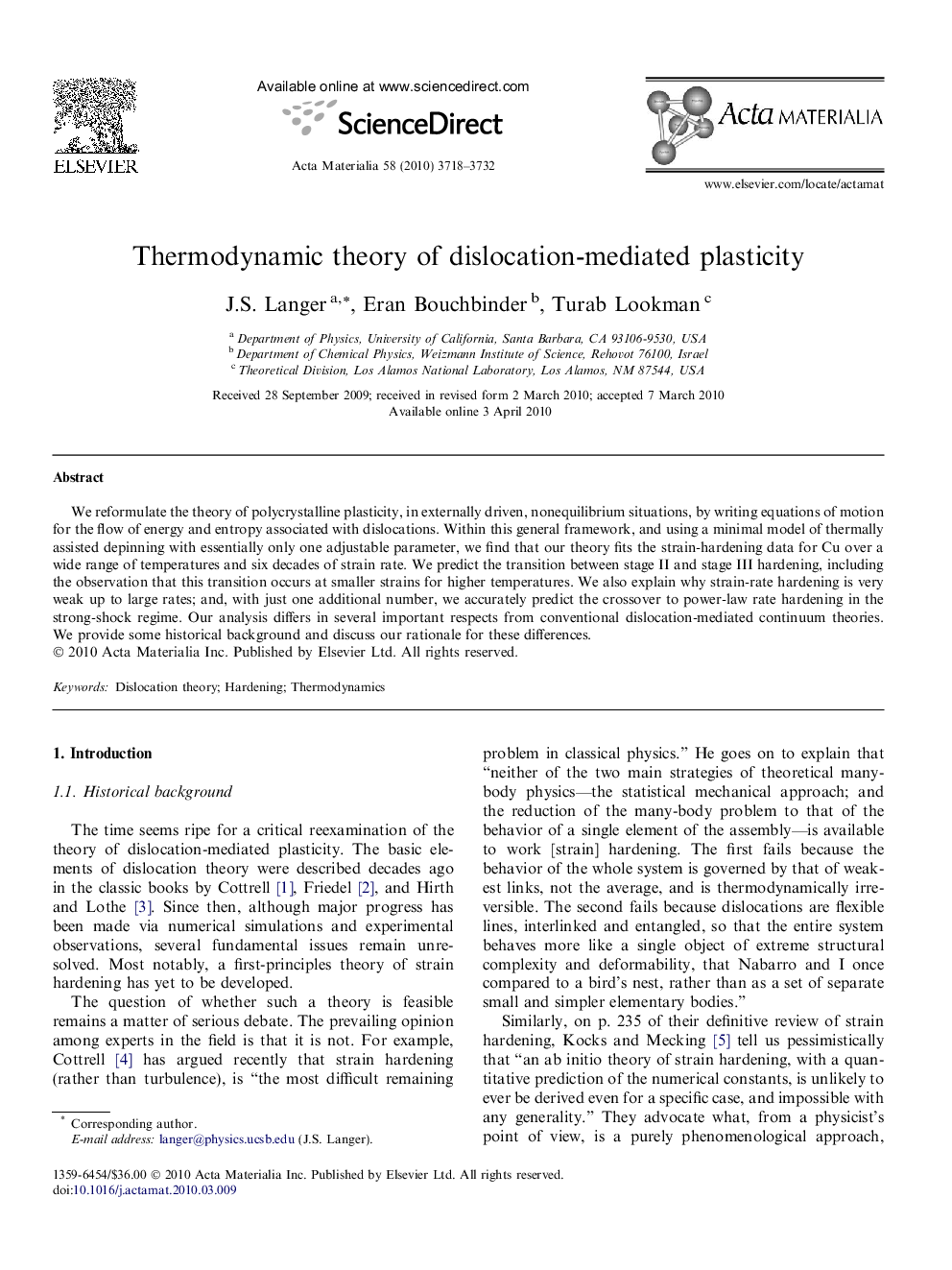| Article ID | Journal | Published Year | Pages | File Type |
|---|---|---|---|---|
| 1448754 | Acta Materialia | 2010 | 15 Pages |
We reformulate the theory of polycrystalline plasticity, in externally driven, nonequilibrium situations, by writing equations of motion for the flow of energy and entropy associated with dislocations. Within this general framework, and using a minimal model of thermally assisted depinning with essentially only one adjustable parameter, we find that our theory fits the strain-hardening data for Cu over a wide range of temperatures and six decades of strain rate. We predict the transition between stage II and stage III hardening, including the observation that this transition occurs at smaller strains for higher temperatures. We also explain why strain-rate hardening is very weak up to large rates; and, with just one additional number, we accurately predict the crossover to power-law rate hardening in the strong-shock regime. Our analysis differs in several important respects from conventional dislocation-mediated continuum theories. We provide some historical background and discuss our rationale for these differences.
